Initial testing took place at Jerez last week as part of the new Formula 1 racing season, which is causing a flurry of interest as a radically different set of technical rules apply.
It’s already clear that the new 1.6 litre turbo engines are proving difficult to bed in, with their complex energy recovery systems providing a few teams with significant issues in terms of reliability.
Here, we summarise the new rules, describe the new team line-ups, add a little of analysis and opinion as to their chances this year, and provide the official F1 team web sites, twitter accounts and driver accounts to allow you to follow developments for what promises to be a very exciting and unpredictable year…
2014 F1 New Rules Summary
1: Smaller Turbo Engines
This is the big change in the game. Gone are the 2.4 litre V8 engines around since 2006, and for which no development was allowed – and in come 1.6 litre V6 turbo-charged units. Although smaller than before, these engines will have much more torque than the engines they replace, partly due to the ERS and turbo enhancements.
2: ERS
ERS, which stands for ‘energy recovery system’, is made up of the KERS (Kinetic Energy Recovery System) system that has been around for some time, and an additional electric motor fitted to the turbo.
KERS previously produced 60kw for up to 6.7 seconds a lap. This year, however, it can produce 150kw for 30 seconds. Wowza! This comes from kinetic energy from the rear axle during braking. The energy that can be generated by the turbo is unlimited, and can be either stored in the battery, or used to accelerate, which might be a differentiating factor a driver or team can elect to use strategically in-race. This motor also means the efficiency of the turbo can be enhanced to eliminate ‘turbo lag’ so that the turbo boost is available immediately when you press the pedal to the metal.
In the past, drivers pushed a button on their steering wheel to access the power stored by the KERS system, typically to accelerate out of corners or to help with an overtake, delivering a burst of around an extra 80 horsepower, but the new ERS will be controlled by the engine management computer, so there is less work for the drivers to do – but probably more to go wrong, and 160hp on tap. Flashing warning lights on the rear of the cars will also show drivers behind when a car is harvesting energy for the ERS – which usually means it will be slowing down.
3: Fuel
Now, you can only use 100kg – or about 130 litres – of fuel per race. That’s down from the 150kg or so teams would use last year, when there was no limit. The smaller engines are naturally more economical, especially with the addition of energy recovery systems, so we’re unlikely to see drivers pulling back on the juice towards the end of a race. However, a more efficient engine will use less fuel, which means they can carry less weight around – and be faster. And there’s always the temptation to fuel light if you’re further down the grid at the start, or expect a safety car.
4: Race Points
The last race of the season, traditionally at Interlagos in Sao Paulo in Brazil, will now be held in Abu Dhabi on November 21st – 23rd , and to spice things up, the plan at present is to award double points for this race, in an effort to make the end of the season, when the drivers’ championship is often decided, more of a cliff-hanger. This decision, which many think is rather cynically designed to bolster TV ratings, given four years of ‘game over’ dominance from Sebastian Vettel earlier in the season, is not universally popular with fans, or the F1 teams and drivers. This week, a proposal to make all three of the last races worth double points has been suggested in a letter to teams from Bernie Ecclestone.
The penalty system has also changed. There’s a new five-second penalty for minor offences, and in addition, points will be awarded on a sliding scale depending on the type of misdemeanour. Any driver who racks up 12 points in a calendar year will serve an automatic race ban.
5: Aerodynamic and Safety Changes
The front nose of the car must now be far closer to the ground than before, in a bid to decrease the chances of cars riding up over others in a front to rear collision, and to protect drivers in their open cockpits if they are t-boned in a lateral crash. The result of this ruling has seen some ‘anteater’ designs from the likes of Caterham and Williams, while Mercedes, Ferrari and Mclaren have less protuberant or phallic solutions in place at the start of testing.
Front wing width has been reduced by 150mm, which does not sound like much, but has a dramatic impact on aero performance with the flow of air around the front tyres and below the car. At the rear, wing width has also been reduced, and there will be no secondary rear wing to allow joining up the different airstreams over the rear wing and through the car’s floor, again reducing downforce.
6: Exhaust gases blown
An important factor over the past three years have been ‘exhaust-blown floors’, which were used with great effect by Red Bull with a diffuser system to boost downforce, and was key to their domination in recent years. Now, there is a single, central exhaust pipe, exiting above the gearbox, which mean exhaust gases can’t be used to affect downforce as before. Jerez tests have already seen a few cars overheating in this area, so this may be a weak area in some climates.
7: Tyres
Pirelli are the sole tyre supplier again, supplying all tyres to all teams until 2016. In 2013, they suffered from heavy criticism after prominent tyre failures, especially at the British Grand Prix, and had to change the composition of their tyres mid-season as a result. The 2014 tyres are designed to accommodate the additional torque from the new turbo engines, but getting all that power down onto the track could be difficult, and at in-season testing at Jerez in January and in Bahrain in February, each F1 team must dedicate one of their eight days of testing exclusively to testing tyres. The new wet tyre displaces even more water than its predecessor, up to 65 litres a second. Pirelli say that the new tyres have been designed using simulation technology and data supplied by teams, as well as real on-track testing results.
The Full 2014 Formula One Team Line-Up
Analysis for 2014, Official Web Sites, Driver Stats Pages from BBC, and official Team and Driver Twitter Accounts
CATERHAM | @caterhamf1
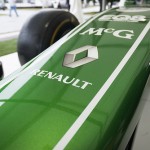
Photo credit: Jake Archibald
Caterham have a radically different approach to the car’s nose design, which some describe as a ‘Marmite’ solution from these relative newcomers to F1. Like Marmite, you either love it, or hate it. It’s certainly different. Team Boss Tony Fernandes has stated unequivocally that he needs to see results this season – points in the drivers’ and constructors’ championships, and so the familiar pattern of almost never getting past Qualifying Stage 1 will need to be broken.
The driver line-up is all-new, with the experienced and very popular Japanese racer Kamui Kobayashi, who is respected for his gritty overtaking prowess and occasional spectacular success from his Sauber days, being partnered by the relatively unknown Swedish rookie Marcus Ericsson. Ericsson, however, has pedigree – he won the 2007 Formula BMW UK, and the 2009 Japanese F3 titles, and came sixth in GP2 in 2013.
FERRARI | @insideferrari
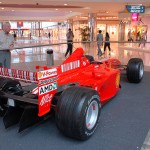
Photo credit: Luca
The prancing horse has a towering F1 history, and its status as runner-up over the past few years is a pattern that Scuderia Ferrari, and their fanatical following, the Tifosi, are desperate to break.
Ferrari are one of the few teams to have the technical advantage of designing their own powertrain and chassis, and have two former world champions behind the wheel, who both will consistently deliver the goods, even if their car is not the fastest on the track.
Fernando Alonso is now widely acknowledged as one of the best drivers to outdrive any car’s limitations and deliver points, with his spectacular starts and subsequent early passing moves, none better than that which delivered a win at the 2013 Spanish Grand Prix. Kimi Raikonnen returns to Ferrari, which gave him his world championship drive in 2007 in the car pictured here, and has shown with wins, consistent point scoring and spectacular overtaking while he drove for Lotus that he still has what it takes to make a world champion. 2014 could well be the year Ferrari get it all lined up to win big.
FORCE INDIA | @clubforce
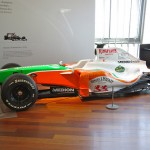
Photo credit: David Merrett
An often underrated and sometimes disappointingly inconsistent team, Force India have two strength of having two impressive drivers in the stable, and a car which on its day, and on the right track, can perform with the best.
Nico Hulkenberg, who towards the end of last season at Sauber, delivered some impressive performances and unexpectedly high points finishes, is in my view one of the best drivers of his generation. He is partnered by Mexican ‘Checko’ Sergio Perez, unceremoniously dumped by McLaren after a disappointing year for both he and his team, but known to be an aggressive overtaker with lightning fast reactions, who has shown sparks of genius, occasionally let down by his relative inexperience allowing errors to creep in.
Powered by Mercedes, which early testing has shown to be a comparatively reliable package, Force India could surprise many this season where the track layout and conditions suit them, and where their opportunistic drivers, when provided with good strategy and support from their team, could really shine.
LOTUS | @Lotus_F1Team

Photo credit: Autoviva
Oh dear. Ongoing financial problems and uncertainty throughout 2013, the loss of team principal Eric Boullier to McLaren in January 2014, and the monosyllabic but spectacularly successful Kimi Raikonnen’s move to Ferrari, as well as the loss of a number of key technical staff to rival teams over the winter, make the non-appearance for testing at Jerez look ominous. And it’s Renault powered.
But don’t forget that Lotus shocked everyone with their win at the opening race of 2013 in Australia, and look at the steady growth in maturity and performance of the once wayward Romain Grosjean over the 2013 season.
And I recall how Brawn (now Mercedes) started in 2009 with just about everything against them, with the loss of Honda’s money and infrastructure, and fiscal uncertainty that would cripple the efforts of lesser mortals. Nobody expected they would even turn up to go racing. And then they went and won the championship, dominating the field.
And the other Lotus driver, Mr Maldonado, like Grosjean in the past, possesses an unfortunate reputation for too often allowing his aggression and passion to overcome his skill and instinctive speed. But remember – he won the Spanish Grand Prix emphatically in 2012. In a Williams. And he brings money to the team. So watch out. Incidentally, the Lotus team’s tweets are always well executed, and often amusing.
MARUSSIA | @Marussia_F1Team
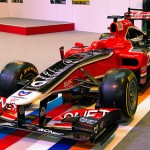
Photo credit: Tony Hisgett
Like fellow new entrants Caterham, nobody expects to see a Marussia battling for the lead in a race this year, other than behind a safety car, so an upturn in performance is perhaps not expected, but certainly possible.
It’s a significant but I think overlooked fact that the very likeable Brit Max Chilton was the only driver to finish every race in 2013. And he was a rookie. Nobody’s ever done that before. Ever.
And did you know what fellow driver Jules Bianchi actually achieved when he was in other formulas? This team does not have the budget or resources of a Ferrari or a Mercedes, but they have got rock-solid drivers and the vision and hunger of the underdog. They could start to surprise us all – and they will also have a Ferrari power unit for the first time.
MCLAREN | @McLarenF1
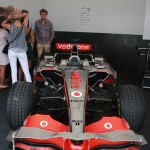
Photo credit: Supermac1961
How have the mighty fallen. 2013 was a disaster for McLaren – the worst performance in the team’s history since 1980. No podiums, a real dog of a car, and a slow backbiting political game in the background which has now seen McLaren Chairman Ron Dennis remove Martin Whitmarsh from his position as team principal altogether. He has become an unperson.
But this team has history, and strength in depth, and is a familiar partner with Mercedes for its powertrain. The stalwart and changing-conditions maestro Button remains behind the wheel, when many expected a Di Resta, Hulkenberg or even Alonso to push him aside – but Jenson’s still there, with an unknown rookie as a partner. But that rookie is another Nordic – a type whose racing pedigree is always known to be fast and focussed. Think Raikonnen and Haikonnen. And winning the Formula Renault 3.5 series title is no mean achievement.
And they have Eric Boullier in charge as Team Principal now. Eric’s been through his fair share of fiscal battles and political issues, but still managed to deliver the goods with Lotus. And now, this is McLaren. Don’t underestimate their perseverance and hunger.
MERCEDES | @MercedesAMGF1
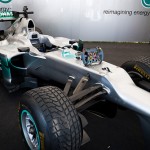
Photo credit: Jake Archibald
Having spent 50 years or so out of Formula 1 as a team, I think it’s safe to say Mercedes are now set to play a long game. But they have shown they can win, and they have two superb drivers behind that iconic silver badge. And with Mercedes AMG engines having powered the likes of McLaren and Force India for years, and now driving their own Brawn-evolved cars, they may just have the edge with deep technical knowledge of how these hugely complex new engines and their associated power systems work and interact with their chassis to make them winners.
Lewis Hamilton needs little introduction. This man almost won the championship in his first season. He’s fast. He’s clever. Perhaps sometimes too emotional, and that gets in the way of his amazing racing skills. Nico Rosberg has grown in stature over the years, and has now shown that he can compete and win with the best of them. His Monaco 2013 win was simply overpowering, and has helped him to emerge from being somewhat in the shadow of more flamboyant team-mates like Schumacher and Hamilton.
RED BULL | @redbullracing
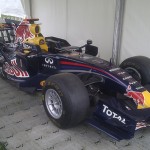
Photo credit: Louis Rix
Dominated for four years by a freakin’ fizzy drink maker! Well, those days could well be numbered, and the nightmarish initial tests at Jerez show that this team’s Renault engines are simply not working. Red Bull always managed to squeeze that little extra from its cars with technical innovation and brilliance, but the legendary Adrian Newey may have met his Waterloo with the 2014 regulations. So far, all we’ve seen is smoke and towtrucks.
Simple problem – Newey does not design the engines that go into his cars. And the engine is more of an electrical power system now, and there’s no room to stuff parts behind the engine like before. Red Bull used to be notorious for having problems with their Kers units that nobody else ever seemed to have – before they started winning championships. And they can’t mess around with exhaust-blown diffusion any more. So their technical options for clever aero tricks are limited.
The drivers are solid: there’s of course the consistent qualifier, race winner and multiple championship winner Vettel. He’s just better than the rest, more often. When the stakes are high – he delivers over and over again, and is scintillating when qualifying. And he’s now joined by the consistent, likeable and Toro-Rosso honed Ricciardo, who will surely learn from the master in this team. However, some big questions are being asked over the reliability of the Renault power in this car, and the team’s ability to get it working properly. 2014 won’t be a runaway season for Red Bull.
- Sebastian Vettel | Seb doesn’t tweet! 🙁
- Daniel Ricciardo | Follow @danielricciardo
SAUBER | @OfficialSF1Team
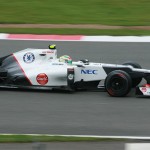
Photo credit: Supermac1961
So often the bridesmaid, you feel with this team. They get close to brilliance, and can really compete on certain tracks and in certain conditions, but they just lack consistency and are often exasperated by losing position late on in races due to misjudged strategy calls, and far too often only manage to shine with one car in the team.
Adrian Sutil is a solid, dependable driver who will perform well, and is a revelation in wet-to-dry changing conditions, in the same mould as Schumacher and Button. Mexican Esteban Gutierrez acquitted himself well last year as a rookie, making a few errors, but learning fast from them, and showing some great overtaking skills from time to time. Neither has the chutzpah of predecessors like Perez or Hulkenberg, but these guys are nevertheless hungry, determined athletes.
Sauber, like Marussia, will be powered by Ferrari engines, which could turn out to give them a distinct advantage over the predominantly Renault-powered grid, which seems so far to be struggling for reliability.
TORO ROSSO | @ToroRossoSpy
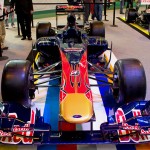
Photo credit: Tony Hisgett
Formerly a Ferrari-powered team, now with Renault, with relatively inexperienced drivers, but big ambitions and a common DNA with Red Bull.
Russian Daniil Kvyat was a surprise choice to many, but Formula 1 is always exciting when new talent joins the field, and with the advent of the Russian Grand Prix this year, interest is bound to be high around this young driver.
Jean-Eric Vergne has been quietly consistent across last year with Toro Rosso, and was reportedly in the running for the Red Bull seat, this being the ‘sister’ team funded by the same energy drink company.
Toro Rosso can and do spring surprises, but like Sauber, have lacked consistency, and sometimes appeared to have weak strategy in races where others manage to pull off surprise placings. But 2014 is a new start, and this team could emerge as a strong contender.
WILLIAMS | @WilliamsF1Team

Photo credit: Norimasa Hayashida
Last year really sucked for Williams. The year before was a little better, with a win, but the year prior to that was really, really awful. This team have been a shadow of their former self for many years. And that former self was a glorious, flamboyant race-winning machine that was feared and respected by the likes of Ferrari, McLaren, Benetton and Renault/Lotus.
A gradual and quiet rebuilding, and the acquisition of talent such as Pat Symonds has taken place, and one can only hope that this year, it comes good for this much-loved team. 2014 also sees them starting to use Mercedes power in the engine.
With Felipe Massa, they have a fast and experienced driver, well capable of competing at the front, and able to give good technical feedback to his team. Finn Valterri Bottas has shown solid skills in a slow car last year, with occasional bursts of brilliance, bravery and determined racing craft such as he showed when he spectacularly passed Gutierrez’s Sauber at the US Grand Prix in 2013.
Williams can be great. Will 2014 be their comeback year?
So, that’s the shape of things to come at this early stage in 2014. It looks set to be an exciting season, with a lot of uncertainty about how teams have mastered the new regulations and harnessed their new power trains’ reliability.
We’ll be previewing every race of the season on the Friday prior to the Sunday running (Thursday preview for Monaco for you pedants), and running competitions to guess the 1-2-3 on the podiums. The full official F1 Race Calendar is available here.
Subscribe now to get our F1 updates by email, or via RSS.
- Follow all the F1 Teams with our handy Twitter List
- or follow all the F1 Drivers with our Handy Twitter List
What are your predictions for 2014? Who will be hot, who will not?

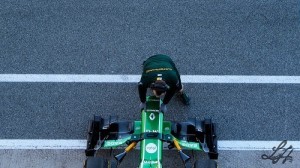
Just a test of our comments system. Feel free to add your views!
If current testing is anything to go by Sebastian Vettel will be issued with a personal fire extinguisher / ice bucket for every race…
V6’s sounded better than i expected too!?